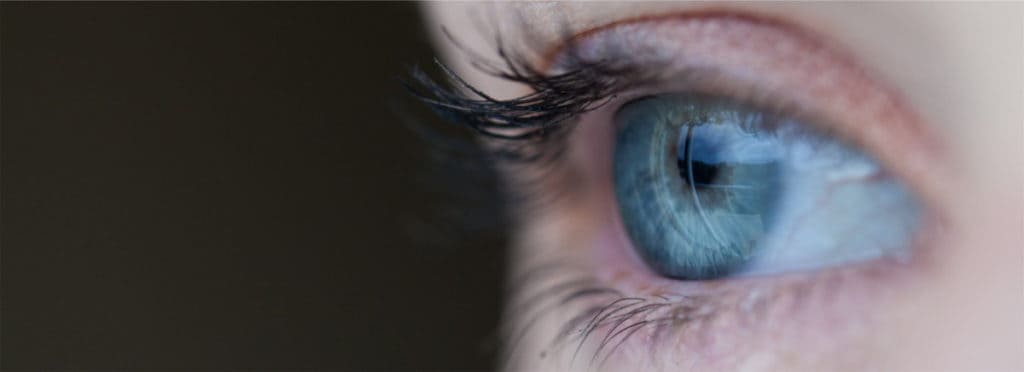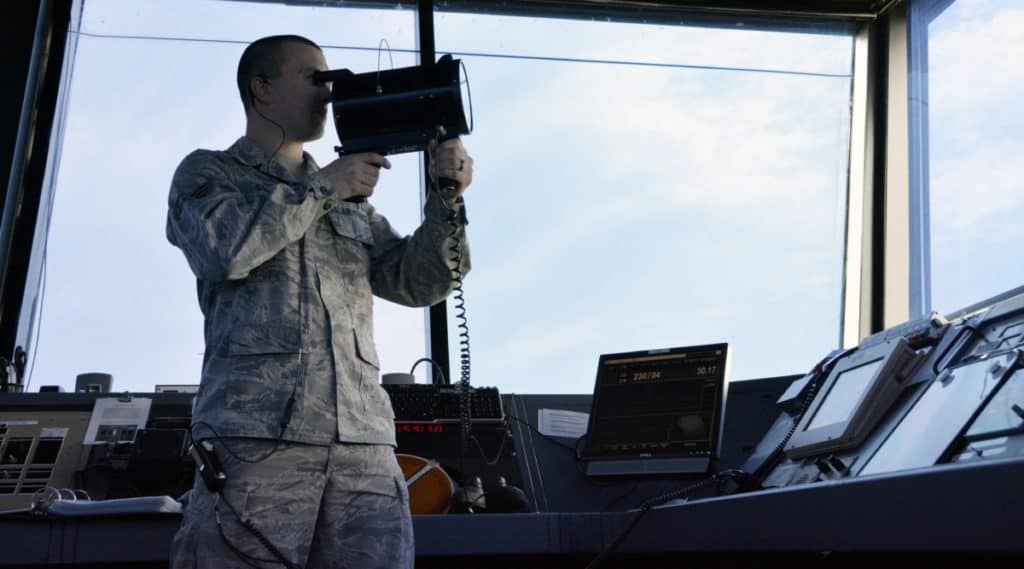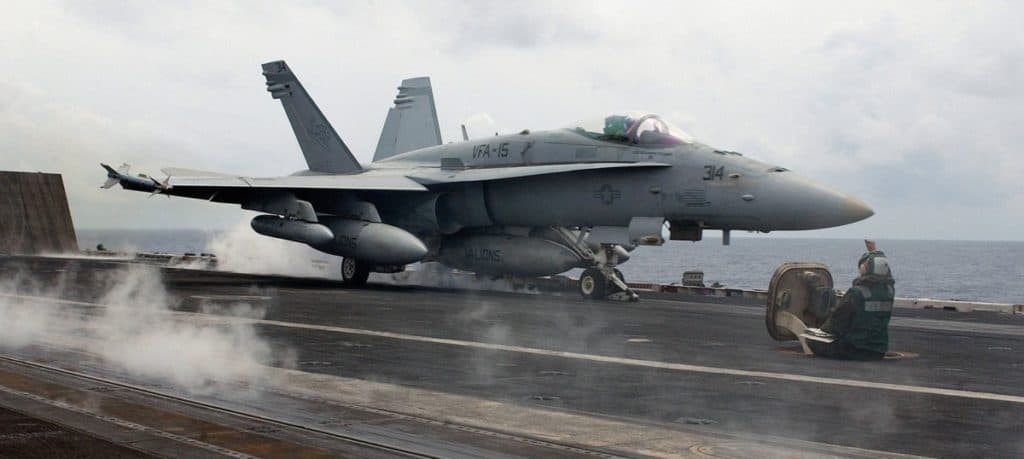
When I was in flight school I remember a fellow student having to go out on the apron and have light gun signals fired at him. At the time none of us knew what this was about until he later explained he never knew he was colorblind.
He passed the test and continued his training and remembering back to that moment gave me the idea for this article.
A colorblind person can become a pilot but they must be able to differentiate between Green, Red, Yellow/Orange, White & Blue to safely perform the duties of an airman. Aviation Medical Examiners (AME’s) will use various Pseudoisochromatic Plates and vision testers to examine the applicant.
My fellow student appears to have been given an Operational Color Vision Perception Test (OCVT) with his instructor under the guidance of his Aviation Medical Examiner (AME).
But what exactly was the whole process he went through?
This article will show you the requirements for both civilian and military pilots.
Acceptable Colorblindness for Civilian Pilots
In respect to becoming a civilian pilot, any colorblindness is linked to a pilot’s Aviation Medical Certificate. There are three classes of Aviation Medical Certificates depending on the type of flying a pilot wishes to pursue:
Third Class Medical Certificate
CFR 14 Part 67 Subpart D
The Third Class Medical Certificate has the most lenient medical requirements and is aimed at Student Pilots, Recreational Pilots, and Private Pilots.
Second Class Medical Certificate
CFR 14 Part 67 Subpart C
The Second Class Medical Certificate has the second most stringent medical requirements and is aimed at Commerical Pilots.
First Class Medical Certificate
CFR 14 Part 67 Subpart B
The First Class Medical Certificate has the most stringent medical requirements and is aimed at Airline Transport Pilots.
In every class of Aviation Medical Certificate, the FAA gives this statement for Colorblindness:
“Ability to perceive those colors necessary for the safe performance of airman duties.”
In aviation, there are 5 main colors that an individual needs to be able to differentiate to abide by the statement above:
- Green
- Red
- Yellow/Orange
- White
- Blue
Most of the colors above can be found in the following areas and misinterpreting the wrong color can have very drastic consequences:
- Taxiway, Runway & Approach Lights
- Operating Ranges for Aircraft Instrumentation
- Light Gun Signals
- Aircraft Navigation Lights
- Data on Aeronautical Charts

Join My Newsletter & Get Great Tips, Information and Experiences To Help You Become a Superb Pilot!
What Tests Do The FAA Use For Colorblindness?
Unfortunately, many people never find out they are colorblind until they go for their first aviation medical examination and they fail.
Here is the colorblind testing procedure for an Airman’s Aviation Medical Certificate.
Step #1. Color Vision Test
Step #2. Apply In Writing to the Aerospace Medical Certification Division (AMCD) or the Regional Flight Surgeon (RFS)
Step #3. Operational Color Vision Test (OCVT)
Lets look at what these steps entail:
#1. This will be the first Medical Examination by an AME which will be the most thorough. During this examination, the examiner can pick from any of the following Color Vision Tests:
- AOC (1965 edition) Pseudoisochromatic Plates
- AOC-HRR (second edition)Pseudoisochromatic Plates
- Dvorine Pseudoisochromatic Plates (second edition)
- Ishihara Pseudoisochromatic Plates: Concise 14-plate edition
- Ishihara Pseudoisochromatic Plates: 24-plate edition
- Richmond (1983 edition) pseudoisochromatic Plates
- Richmond-HRR (4th edition) pseudoisochromatic Plates
- OPTEC 900 Vision Tester and Farnsworth Lantern Test
- Titmus Vision Tester
- Titmus i400
- OPTEC 2000 Vision Tester
- Keystone Orthoscope
- Keystone View Telebinocular
If the applicant has failed any of these tests previously it is advisable to bring it to the attention of the AME. If any of the above tests are failed then the AME will go to Step #2.
#2. The AME will issue a statement on the applicant’s Aviation Medical Certificate bearing:
“NOT VALID FOR NIGHT FLYING OR BY COLOR SIGNAL CONTROL“
If the applicant wishes to pursue a commercial flying career and needs to fly at night or does not wish to have this limitation on their medical certificate they will have to apply In Writing to the Aerospace Medical Certification Division (AMCD) or the Regional Flight Surgeon (RFS) for additional testing to be undertaken.
#3. If approved for additional testing:
Applicants seeking a Third Class Medical Certificate will undergo an Operational Color Vision Test (OCVT). The applicant will only be able to take this test only once and during the day. If the applicant fails, then they may ask to take the test at night, but only once. If the applicant then passes the test at night this statement will be placed on their Medical Certificate:
“NOT VALID FOR FLIGHT DURING DAYLIGHT HOURS BY COLOR SIGNAL CONTROL“
Applicants seeking a Second Class or First Class Medical Certificate will undergo the Operational Color Vision Test (OCVT) during the day AND a Medical Flight Test (MFT). When both of these tests have been passed the applicant will be issued with a Letter of Evidence (LOE) and no limitation will be placed on their medical certificate.
If the applicant fails either of these tests they will not be permitted to hold a First or Second Class Medical Certificate but may be eligible for a Third Class Certificate with the Statement issued to their Certificate as mentioned in Step #2.
Learn More…
Try These Articles:
* Can Pilots Have Glasses, LASIK or Contact Lenses?
* Pilot Medical Exam – What You Need To Pass Each Class
What is an Operational Color Vision Test – OCVT?

The OCVT is first conducted during the day and consists or the following:
- A Light Gun Signal test that must be differentiated in a timely manner using the colors Red, Green & White
- Reading of an Aeronautical Chart. Text in various sizes and colors, markings, topographic shading must all be differentiated in a timely manner
This was the test my fellow flight student went through.
What is a Medical Flight Test – MFT
After passing the OCVT and seeking a First or Second Class Medical Certificate the applicant is then required to take a flight test that consists of the following:
- Read and interpret aircraft instrumentation and displays in a timely manner
- Recognize terrain and obstacles in a timely manner
- Visually identify aviation lights when asked in a timely manner – For example: Aircraft navigation light of aircraft within the vicinity, approach lights, runway lights
Learn More…
Try These Articles:
* Do All Pilots Need Sunglasses? : Yes, Find Out Why!
* People With Disabilities: Can They Become a Pilot?
Acceptable Colorblindness for Military Pilots
To become a pilot in the military you need to be in peak physical fitness not only in just your eyes. In 2018 the U.S. Air Force slightly relaxed its policy on Colorblindness to bring it more in line with the U.S. Navy and U.S. Army.
If you applied to the U.S. Air Force before April 24, 2018 and failed the colorblindness test then you may be able to reapply!

Here are the current requirements of what the military class as ‘Normal Color Vision’:
- A Contrast Cone Test (CCT) score of at least 55 on each eye with all Cone Types (Blue, Red, and Green letters)
The usual colorblindness test that all branches of the armed forces conduct are the :
- Pseudoisochromatic Plates (PIP Test)
- Farnsworth Lantern Test (FALANT Test)
Failing either one of these may render the applicant disqualified from any flying position. A talk with a local recruiter for the applicable armed forces will be the best first step, especially if you know you come close to passing/failing any of these types of examinations.
- Find a local U.S. Air Force recruiter HERE
- Find a local U.S. Navy recruiter HERE
- Find a local U.S. Army recruiter HERE
- Find a local U.S. Coast Guard recruiter HERE
To Finish
Being colorblind does not necessarily prevent you from being a pilot. Depending on the type of colorblindness you have you may get several chances to get in that pilot seat.
If you are applying to the Military and find you do not pass their test then a career in a civilian aircraft may be an option.
If you are thinking of a career in aviation and you are not sure if you are colorblind, before you spend any money on an Aviation Medical Examination or traveling across the country for the Military Medical Examination I suggest you make an appointment with a local eye doctor and have some tests done, it will be a heck of a lot cheaper than finding out the hard and expensive way!!


